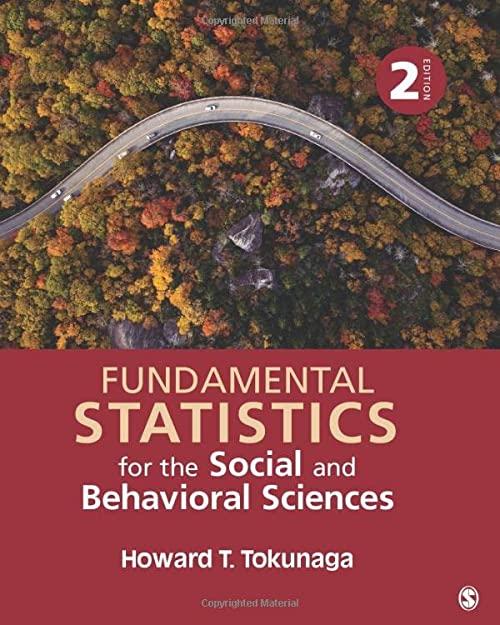Another part of the study discussed in Exercise 25 had a second sample of nine older adults
Question:
Another part of the study discussed in Exercise 25 had a second sample of nine older adults take part in an 8 -week calisthenics program in which they did squats, hamstring curls, and lunges. As the program was designed to help these adults perform everyday activities more easily, before and after the program, each adult was asked how difficult it was for them to get in and out of a bathtub (the higher the number, the greater the difficulty). The descriptive statistics for this bathtub-related difficulty variable were the following: pretest \((M=4.30, s=2.00)\) and posttest \((M=2.90, s=.90)\). Furthermore, the mean difference score \(\left(\bar{X}_{D}\right)\) was 1.40 ; the standard deviation of the difference scores \(\left(s_{\bar{D}}\right)\) was 1.86 . Test the difference in bathtub-related difficulty between the pretest and posttest.
a. State the null and alternative hypotheses \(\left(\mathrm{H}_{0}\right.\) and \(\left.\mathrm{H}_{1}\right)\).
b. Make a decision about the null hypothesis.
(1) Calculate the degrees of freedom \((d f)\).
(2) Set alpha ( \(\alpha\) ), identify the critical values (draw the distribution), and state a decision rule.
(3) Calculate a value for the \(t\)-test for dependent means.
(4) Make a decision whether to reject the null hypothesis.
(5) Determine the level of significance.
c. Draw a conclusion from the analysis.
d. What conclusions might the researchers draw regarding the effectiveness of a calisthenics program designed for older adults?
Step by Step Answer:

Fundamental Statistics For The Social And Behavioral Sciences
ISBN: 9781506377476
2nd Edition
Authors: Howard T Tokunaga




